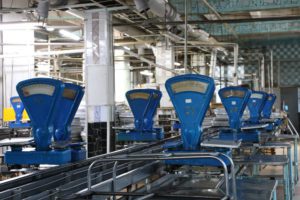What if we thought of our organizations as machines? Machines work best when everything stays the same. For example, when our car doesn’t start in the morning, we understand that something needs to be fixed. We take it to the mechanic, and there they diagnose the problem and create a solution. If the car has a broken water pump, the solution is to just replace it. Machines are unique because we can replace the part that needs to be fixed without having to affect other parts of the car.
If our organizations worked like machines, once we would initiate change in an area of the organization, it wouldn’t impact the larger culture. This is a significant difference in how we think about change and its relationship to the organizational culture, compared to how machines operate. If we want to create more innovation or engagement by employees, the way we think about our organization matters!
In a living system, everything is connected. These connections are the change initiatives and the larger culture. Donella Meadows wrote the book Thinking in Systems (2008) and in one of the chapters are leverage points on how to shift systems. One of the ideas in this chapter is that in order to shift a system, we first have to transcend the mindset from which the system (currently) operates.
Any change requires a shift in the mindset of the current organizational culture
When we initiate change in our organizations, we are focused on what needs to be fixed. This comes from a deep background assumption that our organizations are more like machines than living systems. In my experience facilitating change, we need to see a change initiative from a systems (culture) perspective.
A system is designed to produce the exact results that we experience. Therefore, if we are having trouble getting people to innovate, the system (i.e. culture) is not designed for people to innovate. To be successful in facilitating a change that generates more innovation, we must transcend the mindset, processes, and culture of the current organization. If we don’t facilitate change from an organizational culture perspective and try to create innovation without changing our culture, the change initiative will fail. Culture will eat the change initiative for lunch.
Facilitating change and culture simultaneously
In my experience facilitating organizational change, part of sustainable change results is a shift in the mindset of the culture itself. For example, organizations that are doing diversity, equity, and inclusion work in their organizations often look at recruitment, retention, criteria for promotion, and training as a place to become more inclusive. However, if the mindset of the people who work in the organization doesn’t change, then they will continue to default to what the current culture supports and rewards. Therefore, the diversity and equity work will falter and be overridden by the current culture. The change only holds when the mindset of the larger culture shifts along with the processes that support the change.
Therefore, leaders and facilitators of change need to start seeing the interdependent relationship between any change initiative and the larger organizational culture. If you change one area without the other, nothing will stick.







Facilitating organizational change starts with recruiting
Facilitating organizational change starts with a deep knowledge of the context you’re in, then probing it with a simple interaction, then watching how the system responds.